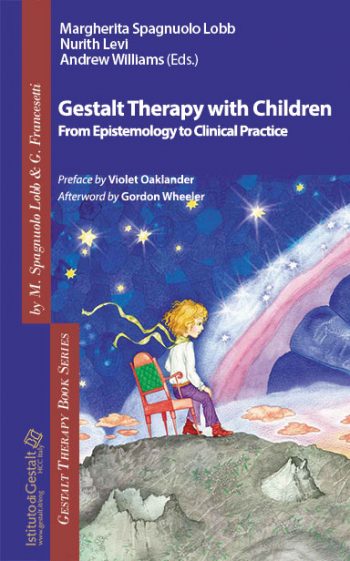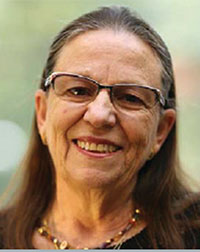
Redaktører:
Margherita Spagnuolo Lobb, Nurith Levi & Andrew Williams
Forlag:
Istituto di Gestalt HCC Italy
Utgitt:
2016
Sammendrag:
Children today come to therapy with problems related to anxiety, eating, lack of concentration, and difficulties in how they socialize and learn. This clinical picture is a dramatic mirror of the actual development of our society.
For years we have been witnessing events that show a widespread disowning of the human condition. Deaths following terrorist attacks or migration flows in the Mediterranean area, and dramatic climate changes that have drastically affected our spirit.
What does a child feel when she listens silently to the news and the comments of the adults, or when she is directly involved in such traumatic events? Children absorb the cruelty, and, even worse, the adults’ dissociation may lead them to perceive these events as “normal.”
Psychotherapy and child development research must acknowledge these new conditions in which children grow up, and clinical work should take account of this now widespread experiential background.
This book tries to outline how contemporary Gestalt psychotherapists face the actual clinical situation when they work with children. The aim is to develop new tools to help children and their families to feel part of the human community, in a way that is not desensitized.
It is addressed to psychotherapists of all approaches.
***
Contents
Preface, by Violet Oaklander
Introduction: From Dental Aggression to Suffering of the “Between”, by Margherita Spagnuolo Lobb, Nurith Levi and Andrew Williams
Acknowledgments
Part I – Basic Principles
1. Gestalt Therapy with Children: Supporting the Polyphonic Development of Domains in a Field of Contacts, by Margherita Spagnuolo Lobb
2. Between Caring and Respect. Ethical Aspects of Gestalt Psychotherapy with Children, by Nurith Levi
3. Moving Experience: Kinaesthetic Resonance as Relational Feel, by Ruella Frank
4. Between Spontaneity and Intentionality of Growth: Gestalt Therapy and Children, by Elisabetta Conte and Silvia Tosi
5. A Field Called Home, by Carmen Vázquez Bandín
Part II – Clinical Applications
6. Being Fierce in a Good Way: Helping Children, and the Adults Who Work with Them, to Navigate the Polarities of Cooperation and Assertion, by Peter Mortola and Diane Gans
7. Restoring the Melody of Contact, by Natalia Kedrova
8. Working with the Developmental Age in Gestalt Therapy, by Giuseppe Sampognaro
Part III – Psychopathological Issues
9. The Dilemma of Diagnosis: the Practice of Gestalt in the Real World and a Possible Way Forward, by Neil Harris
10. Transmission and Transformation of Psychopathological Fields Between Generations, by Gianni Francesetti
11. Autism as a Qualitatively Different Encounter Between Organism and Environment at the Contact Boundary, by Antonio Narzisi
Afterword, by Gordon Wheeler
References
Authors
The Editors

Margherita Spagnuolo Lobb, Ph.D., is Director of the Istituto di Gestalt HCC Italy (Siracusa, Palermo, Milan). She has significantly contributed to develop a Gestalt approach to psychopathology and child development, connected with actual social trends. Her book The Now-for-Next in Psychotherapy. Gestalt Therapy Recounted in Post Modern Society (2013) is available in six languages. She lives in Siracusa, Italy.

Nurith Levi, Ph.D., M.S.W., is a certified psychotherapist and supervisor, a specialist in child and adolescent therapy, an experienced Gestalt trainer working throughout Europe. She is Chair person of Training Standards Committee, and active member of the Human Rights and Social Responsibility Committee at EAGT. She lives in Tel Aviv, Israel.

Andrew Williams, M.A., Dip SW, is a qualified social worker and Gestalt psychotherapist who has worked with children and their families for over 20 years. He is currently Clinical Lead for a Child and Adolescent Mental Health Service at Alder Hey Children’s NHS Foundation Trust (UK). He lives in Wirral, England.
